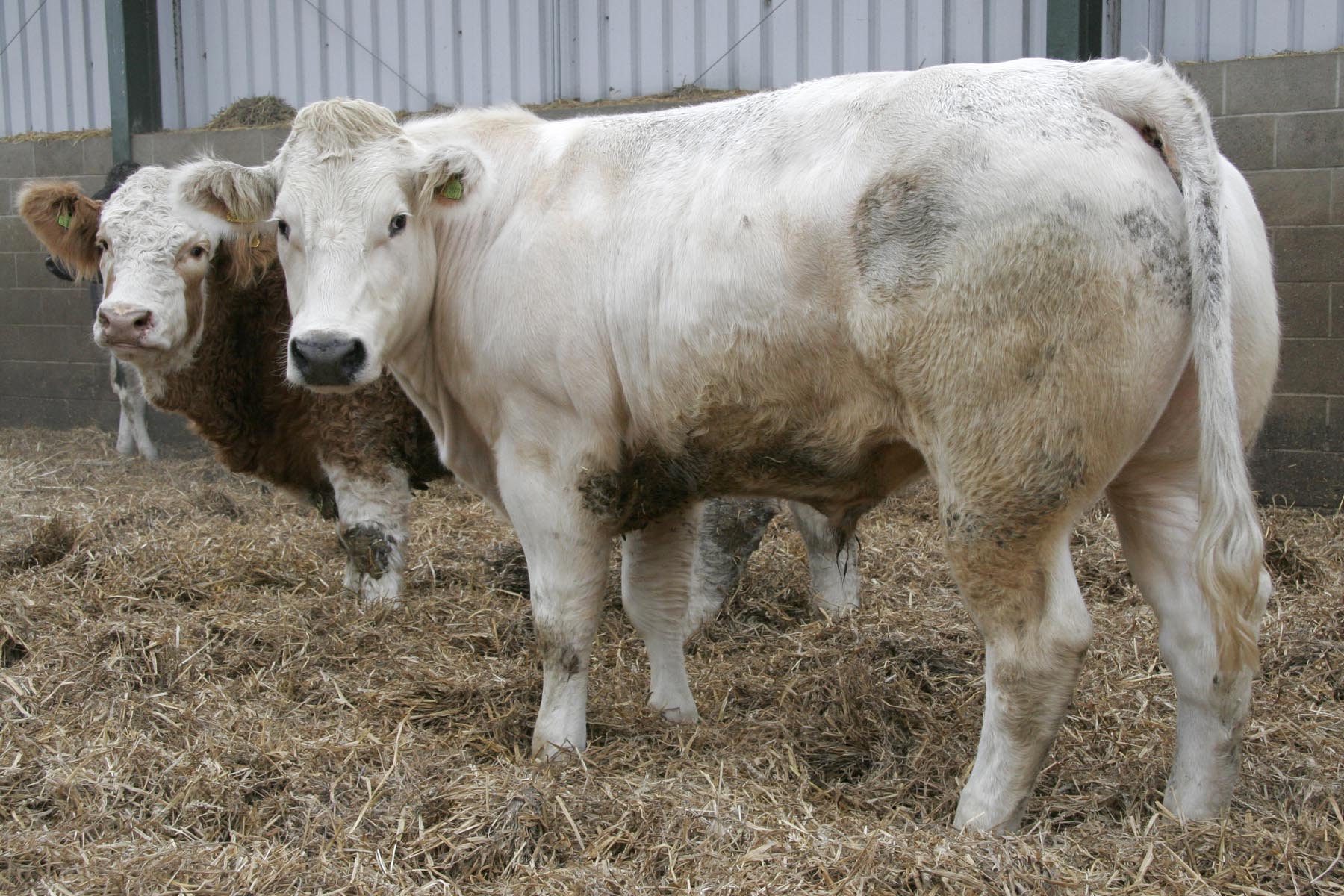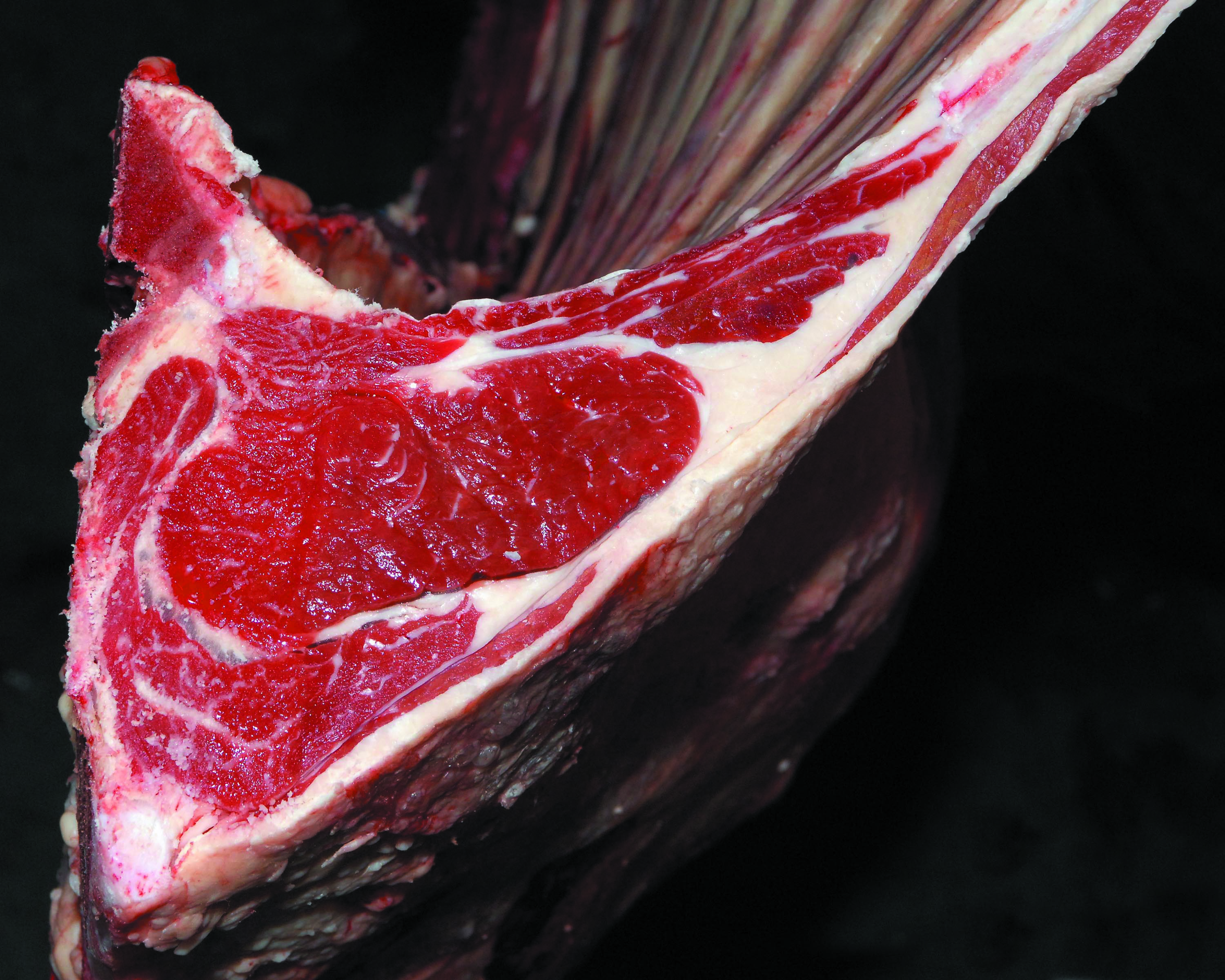- Home
- Knowledge library
- Assessing conformation in beef cattle
Assessing conformation in beef cattle
Learn more about where to handle live animals to assess conformation.
Back to: Selection for slaughter
Handling points
As a rough rule of thumb, the conformation or shape of an animal is largely down to genetics and breeding. While it can be influenced by husbandry, it is less easy to influence than fat.
There are three key areas to focus on when assessing conformation:
- The depth and thickness of the round or hind quarter.
- The fullness of the loin.
- The thickness of the flesh over the shoulder.
Remember, carcase classification is an overall assessment of the three areas: round, loin and shoulder. When the three parts differ, the classification for two of the three is applied.
Shoulder
E – Very rounded
U – Rounded
R – Fairly well developed
O – Average development to almost flat
P – Flat with bones visible
Loin
E – Wide and very thick up to shoulder
U – Wide and thick up to shoulder
R – Still thick but less width at shoulder
O – Average to lacking thickness
P – Narrow with bones visible
Round
E – Very rounded
U – Rounded
R – Well developed
O – Average to lacking development
P – Poorly developed
Conformation differences
At the same fat level, cattle with good conformation will yield more saleable meat. This reflects differences in the meat-to-bone ratio – a factor largely determined by breeding. Good conformation carcases also yield more high-priced cuts.
Lean cattle of good conformation have thickly fleshed, well-rounded contours. Viewed from the rear, they stand wide, with convex hindquarters that are wider than their back. From the front, they are wide between the legs and thick through the shoulder, yet have a trim brisket.

.jpg)
.jpg)
Cattle of poor conformation have a relatively straight or, at some points, hollow appearance. They are often bony and angular, although excess fat may disguise this to some extent.
.jpg)

.jpg)

